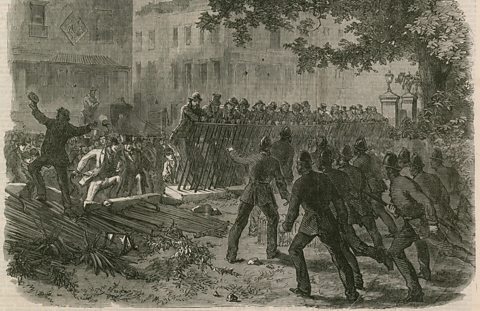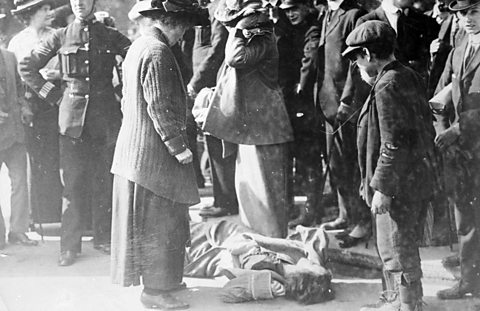Pressure groups
Changing political attitudes and examples of popular rebellion abroad inspired many groups within Britain to demand a more open and genuine democracy.
The Reform Union and Reform League
In 1864, the National Reform Union was formed to promote the idea of common interests between the middle and working classes.
It argued that the political aims of the two classes were similar and that they could work together politically. The organisation campaigned for:
- a secret ballot
- equal distribution of seats in parliament
- votes for all ratepayers

The Reform League was also formed in 1864. It was a much more radical movement.
The League attracted many followers including trade unionists, socialists and former Chartist sympathisers. It campaigned for universal male suffrage and a secret ballot.
A number of demonstrations and marches were organised by the League prior to the passing of the Second Reform Act in 1867. After proceedings turned violent in Trafalgar Square and Hyde Park, protests spread to other parts of the country, albeit on a smaller scale.
The protests increased in number during the 'Winter of Discontent' of 1866-67.
Women’s suffrage groups
The National Union of Women's Suffrage Societies (NUWSS)
The NUWSS was an umbrella group established in 1897 to coordinate the women’s suffrage societies emerging at local level. The suffragists used peaceful methods of protests and had 53,000 members by 1914. They gained more support as backing for the suffragettes reduced.
The Women's Social and Political Union (WSPU)

The suffragettes were born out of the suffragist movement. Emmeline Pankhurst had grown impatient with the middle class, respectable, gradualist tactics of the NUWSS.
In 1903 she broke ranks and set up a separate society. This became known as the Women's Social and Political Union (WSPU).
The suffragettes used increasingly violent methods to highlight the struggle of disenfranchised women. Sensational events, such as the death of Emily Davison, gained considerable media coverage.
Hunger strikes, and the resulting Cat and Mouse Act, brought a great amount of sympathy for those women involved.
However suffragette methods were not always successful. Many MPs who had previously supported increasing the franchise to women, withdrew their support due to the methods of the suffragettes. Membership fell severely in the years before World War One.
More guides on this topic
- How democratic Britain became - 1867 - 1928
- Why women won greater political equality by 1928
- Why the Liberals introduced social welfare reforms
- The effectiveness of the Liberal social welfare reforms
- Effectiveness of the Labour social welfare reforms, 1945–51
- Working conditions in Scottish industry in the 1940s